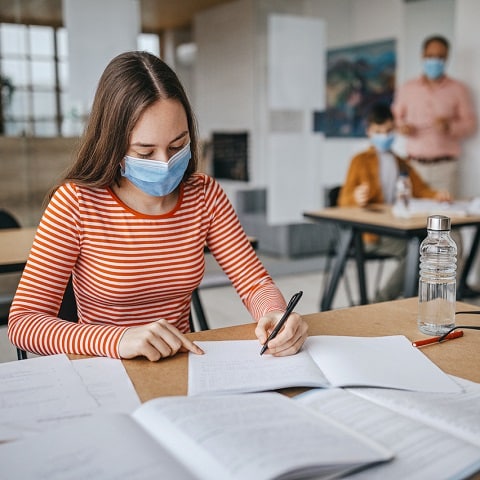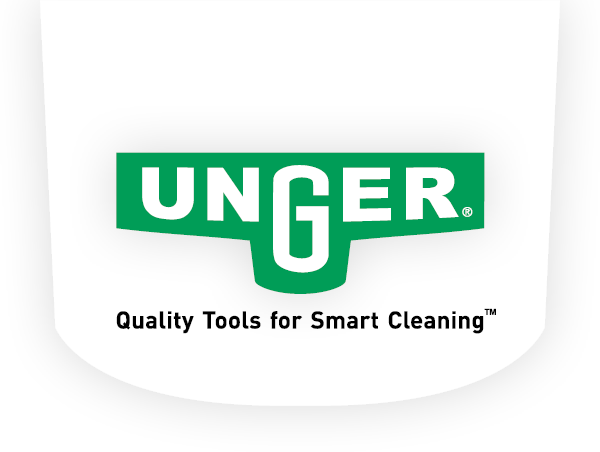NEW! Powerful Nano Filtration with Unger's HydroPower® Nano See The Product

Every Decision Counts When it Comes to Sourcing Modern Cleaning Equipment for Schools & Universities
When the nation’s health system was hit by impact of COVID-19, the immediate focus turned to protecting the medical and support staff who were on the frontlines of treating those infected. And while non-essential workers followed stay at home orders and safer at home initiatives, other essential workers, specifically custodial staff, continued to go to work during the impending pandemic and do their part in protecting the health and safety of our communities.
In fact, due to the frontline commitment of custodial workers, a new survey conducted by restroom products manufacturer GP PRO, a division of Georgia-Pacific, shows a widespread change in perception and empathy for cleaning industry workers. The survey found that 56% of respondents said they regard custodians more highly than they did before COVID-19 began impacting the U.S. So what are industries doing to demonstrate their support and appreciation for these workers?
For schools, in particular, as they continue to plan for safely re-opening and operating, custodial staff will continue to be at the forefront of protecting teachers, staff, students and the community at large. And as administration develops new policies and procedures around cleaning and disinfecting, they’ll need to consider how their actions and investments will demonstrate to the janitorial staff that what they do matters. Fortunately, the answer to this not only lets custodial staff know that their contributions are appreciated and their safety is top of mind, but tactically, also supports more effective cleaning of school facilities.
Protecting Worker Safety during COVID-19 and Beyond
According to ZipRecruiter, COVID-19 has led to a 75% increase in year-over-year listings for cleaners, cleaning companies and janitors on their website—highlighting a rapid demand for these services, especially in schools where cleaning and disinfecting are part of a broad approach to preventing infectious diseases. As more cleaning professionals enter schools, across the board they’ll need to take responsibility for following guidance on how best to clean and disinfect, using products safely, and handling waste properly. But, what role do the schools themselves play in protecting these workers?
In addition to ensuring a plan to maintain proper social distancing and providing adequate protective gear, schools can take the next step in investing in resources that protect cleaning staff, makes them feel as prepared as possible, and clearly demonstrates that their health and well-being is just as important as the communities they’re serving. Every decision counts when it comes to investing in resources, especially commercial cleaning products that have become more financially obtainable to schools thanks to Esser Funding created through the CARES Act. Complimented by comprehensive COVID-19 education and training, schools can make decisions that send the signal to janitorial staff that what they do matters.
Sourcing Cleaning Tools for Educational Facilities
The equipment used to clean classrooms, restrooms, cafeterias, and other campus facilities matters every bit as much as the final result. And not all cleaning supplies are created equal: some cleaning supplies pose physical risks to janitorial staff and carry many other hazards that can jeopardize the quality of the facility and those that live and work within it. In general, when sourcing campus cleaning equipment, facility managers and building service contractors should look for tools that meet objectives for:
- Frequent cleaning and disinfecting of high touch surfaces
Cleaning staff will need to follow new guidelines and protocols for the daily cleaning and sanitizing of surfaces and objects that are touched often, such as desks, countertops, doorknobs, hands-on learning items, restroom faucet handles, etc. To support an increase in frequency, cleaning tools need to be easy to use, ergonomic and efficiently designed to enable your custodial team to perform tasks faster, cleaner and safer.
Best Practice Example: Tools that provide a variety of surface cleaning options utilizing lightweight extending poles enable you to clean at any height, increasing productivity and safety by eliminating time spent moving furniture or climbing ladders.
- Minimizing the Use of Harsh Chemicals
The threat of harmful germs and infectious disease that can cause physical discomfort is enough to manage without the additional discomforts that can result from the use of harsh cleaning chemicals, such as irritated eyes, runny noses, scratchy/sore throats and aggravated asthma. The Occupational Safety and Health Administration (OSHA) requires the use of personal protective gear when working with hazardous materials as well as the clear labeling of these substances. A reduction in chemical use will minimize the risk to janitorial staff when handling these materials.
Best Practice Example: The US Green Building Council specifies microfiber products as part of their standards because they conserve water, reduce the use of disposable products and require fewer harsh chemicals. Microfiber cloths can reduce surface debris and lower bacteria levels by 96% because its unique construction removes and captures mold, bacteria and soil.
- Keeping Cleaning Staff at a Safe Distance
Cleaning staffs are responsible for deep cleaning and disinfecting surfaces and areas that host potentially dangerous germs and viruses. Cleaning tools that utilize telescopic and extendable poles can help keep a desirable distance between infectious surfaces and cleaning staff.
Best Practice Example: High-quality litter removal tools are strong enough for heavy-duty work, but light enough to protect the user from back and arm strain, and keep them at a safe distance from contaminants.
- Minimizing the Risk of Injury
According to the Bureau of Labor Statistics, janitors and cleaners suffer an average of 50,000 injuries a year that require days off work. The most common complaint among janitorial staff is back and shoulder injuries resulting from overexertion and repetitive motion. For example, when restroom cleaning carts are too heavy, water buckets need to be changed out frequently, or furniture needs to be moved to reach hard to access areas, lifting, mopping, and reaching can become dangerous movements.
Best Practice Example: Lightweight, easily extendable telescopic poles can reach heights of 60 feet and beyond, keeping workers safely on the ground, eliminating the risk of ladder falls and preventing awkward lifting and bending to move furniture that can cause back injury.
Every Decision Matters
America has an approximate 4.4 million janitors and domestic workers who are working to combat the spread of coronavirus.* And now that states are preparing to open school doors, it’s time to let these frontline workers know that what they do certainly does matter to the communities in which they serve. By understanding that every decision counts when it comes to investing in modern commercial cleaning equipment, schools will be protecting the health of custodial staff as they continue to work to bring teachers and students back to school safely. And by making an investment in protecting your staff, while also helping them to increase efficiency and productivity, they’ll receive the message that what they do does matter and is an important part of your school’s successful operations.
> Learn More About Unger’s Full Line of Campus Cleaning Equipment
